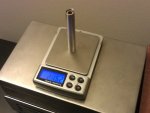DTR
0
- Joined
- Jun 24, 2010
- Messages
- 5,684
- Points
- 113
Ah, very nice ^_^
As does my FlexDrive build with my 445 in it... of course, I turned the pot all the way up, so efficiency is certainly lower. In this case, I am drawing about 2.3A at 3.7V and putting out 4.5-4.6V at 1.5A or so.
Also from what I understand results often do differ slightly from the data sheets values when tested in with real world conditions. I am sure RHD could give us an idea what one of them set close to 1A is actually doing in the real world with an actual 445 diode and 4.2V from the power source.:beer:






